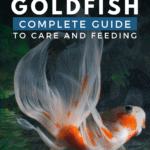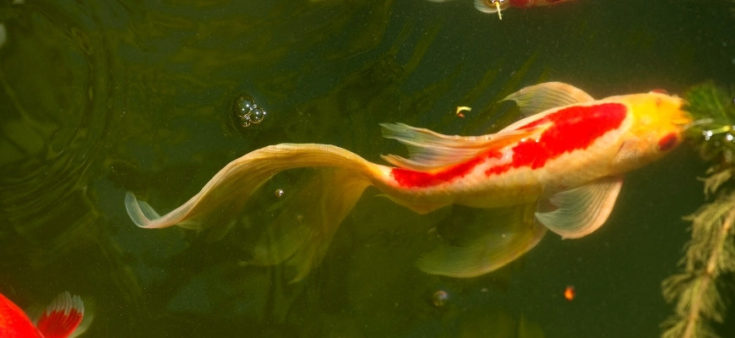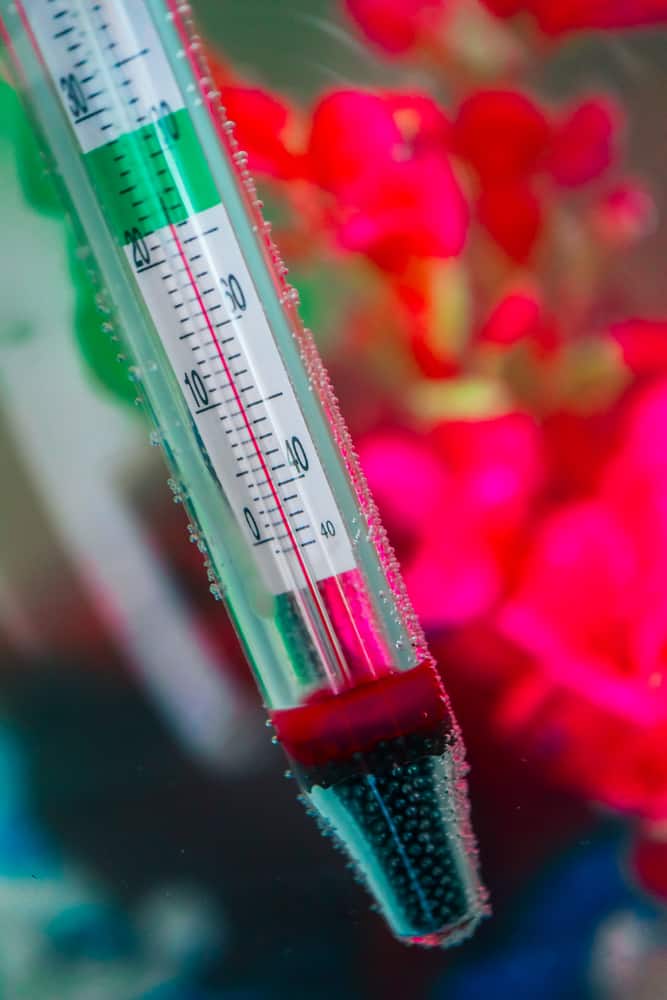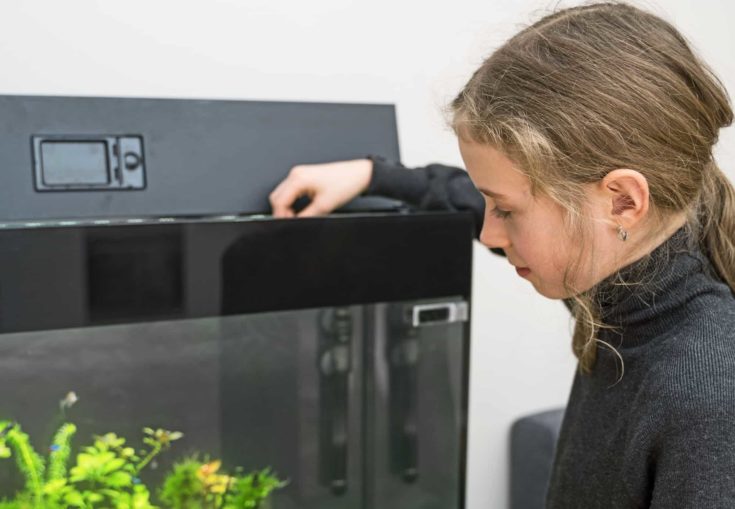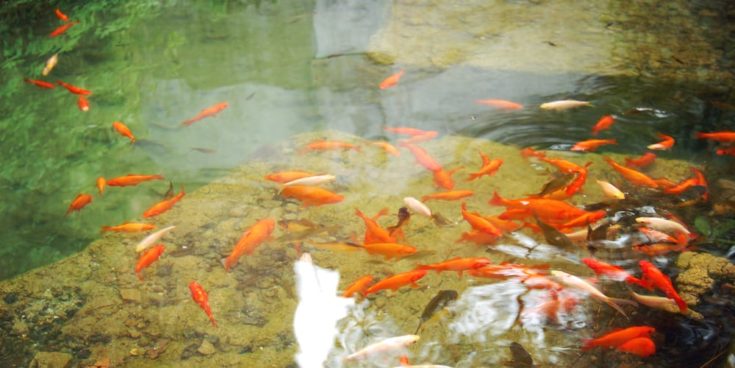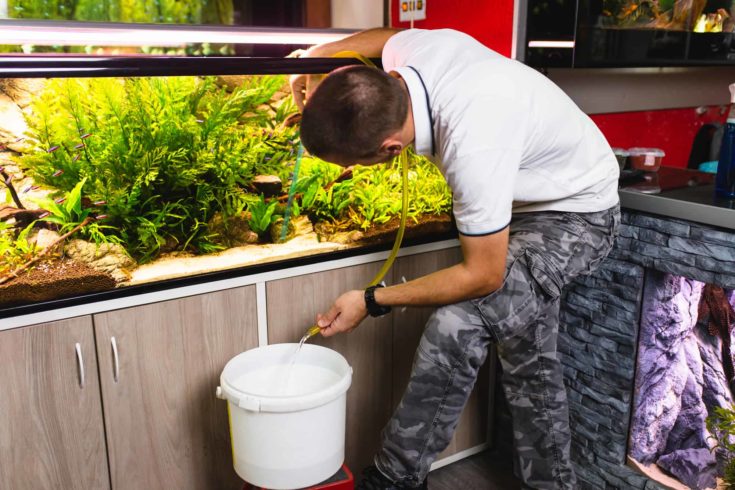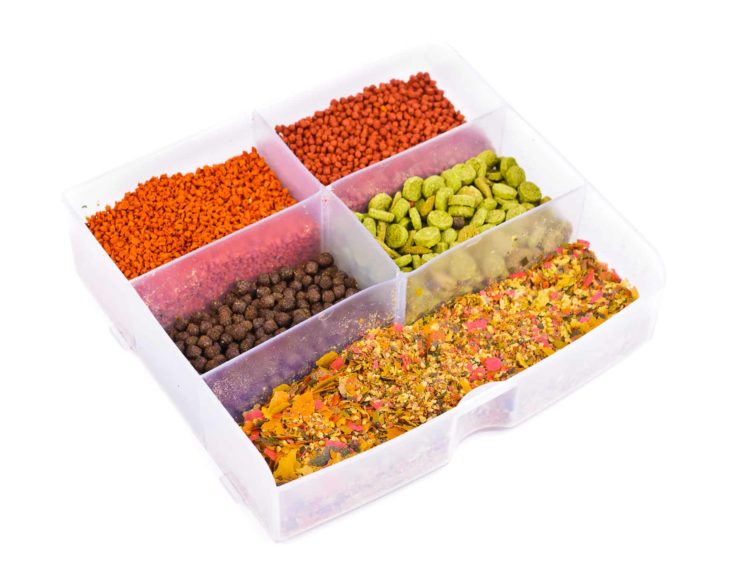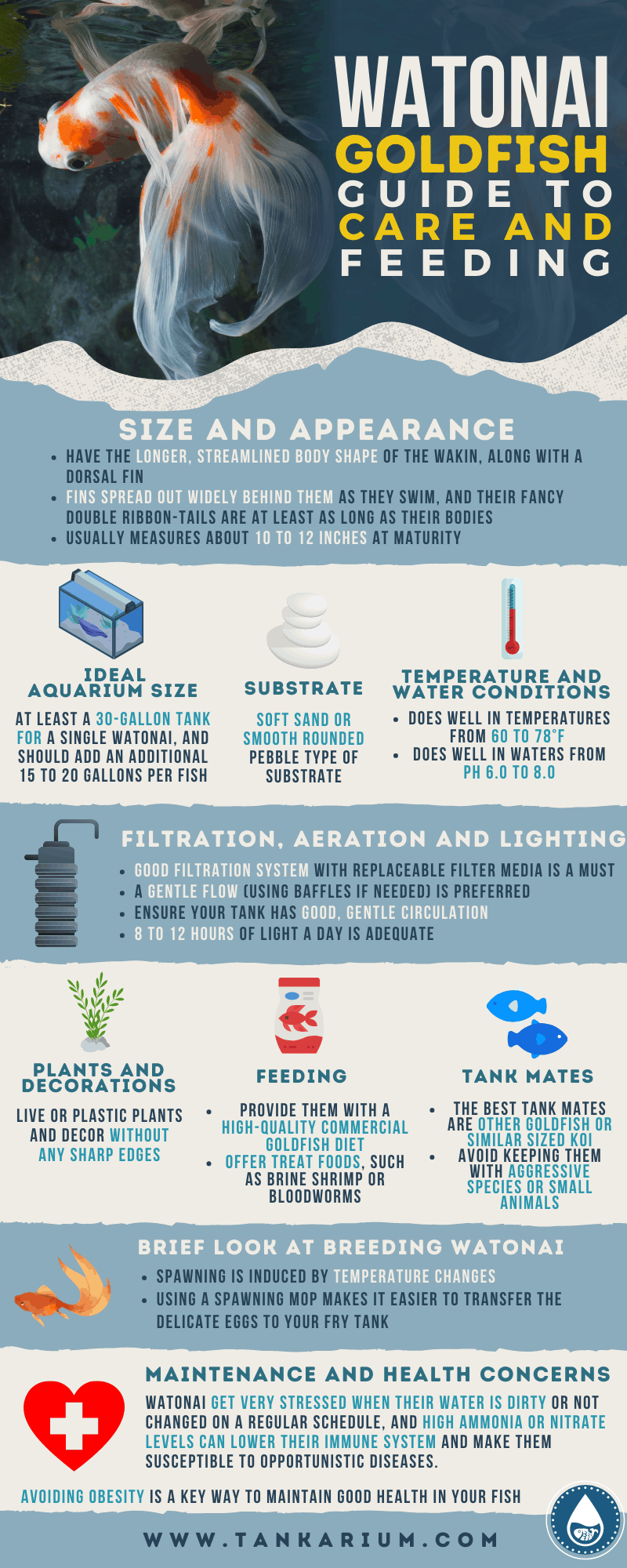Fancy goldfish are a very popular option for novice and experienced fishkeepers alike, but sometimes you want something really special. One of the rarest varieties was recently resurrected, and you can now find the beautiful Watonai Goldfish for sale from specialty breeders. Should you consider this magnificent fish for your tank?
What is a Watonai Goldfish and Why are They Special?
The Watonai (pronounced wa-town-eye) is a unique and extremely rare variety of fancy double tail goldfish. Originally described in 1908 by Dr. Shinnosuke Matsubara, these Japanese-bred fish were thought to have been originally created from a cross of a humped-back Ryukin and fantail Wakin goldfish.
The resulting offspring and their descendants shared traits with both parent lines, most notably having an extremely long double tail and hearty, cold-tolerant constitution. Unfortunately, this ribbon-tailed variety disappeared by the mid-part of the century and appears to have gone extinct.
A few breeders recently decided to resurrect the variety by breeding new lines from fresh Ryukin/Wakin crosses. Modern Watonai are extremely rare and valuable fish, and may cost in excess of several hundred dollars apiece, assuming you can even find them for sale.
Size and Appearance
Watonai usually measures about 10 to 12 inches at maturity, but some pond fish may grow much larger. Wakin goldfish can measure up to 19 inches, so it’s certainly possible that one could reach 15 to 19 inches.
What makes the Watonai such a desirable pet? They are bred for their magnificent elongated caudal fins (tails) that resemble a butterfly when viewed from above:
- They typically have the longer, streamlined body shape of the Wakin, along with a dorsal fin (unlike the Ryukin).
- Their fins spread out widely behind them as they swim, and their fancy double ribbon-tails are at least as long as their bodies.
- This variety is the fanciest type of goldfish that is suited for life in a pond.
Lifespan
Since modern Watonai is such a new lineage, we don’t really have solid factual information about their average lifespan. Other types of goldfish can live for 20 to 40 years when properly cared for, so there’s no reason to think this variety can’t reach such a venerable age.
Behavior and Temperament
Goldfish are peaceful and social fish who are generally active and curious about their environment:
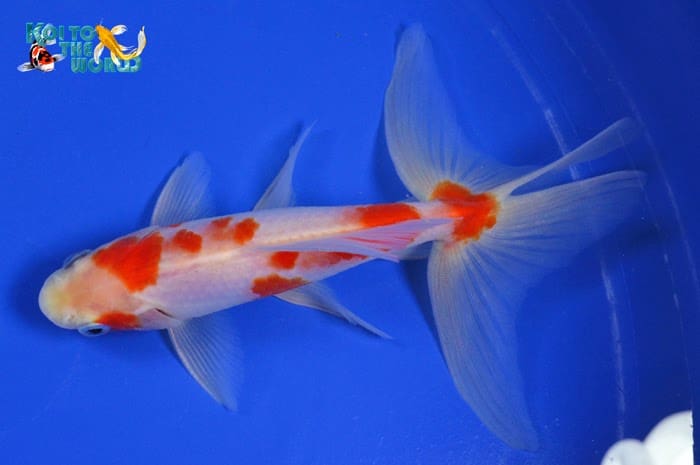
- Watonai have classic goldfish personalities and enjoy swimming and searching for food.
- Their bodies are not as streamlined as the Wakin, so they tend to be slower swimmers, but they are well able to navigate an aquarium or pond.
- They may uproot live plants and make a mess of their aquarium, but are less likely to cause real destruction to your plants, unlike the Common variety which often kills them through play.
How to Care for Your Fancy Watonai
Watonai care requirements are similar to other types of fancy goldfish, so you don’t need to worry about mastering any special skills to have a healthy group of fish.
Ideal Aquarium Size
You’ll need at least a 30-gallon tank for a single Watonai, and should add an additional 15 to 20 gallons per fish to give them all adequate space. With their elaborate, widely-spread tails, they do better in longer and wider tanks.
Substrate
To prevent any injury to their long ribbon tails, it’s best to go with a soft sand or smooth, rounded pebble type of substrate over harsh aquarium gravel. These fish look particularly magnificent when viewed against a dark-colored substrate or background.
Temperature and Water Conditions
Unlike many varieties of fancy goldfish, the Watonai is a hardy type and does well in temperatures from 60 to 78°F. You’ll want to maintain a consistent temperature, however, so you may need to use a heater in the colder months. They are not particularly sensitive to water hardness, and do well from pH 6.0 to 8.0.
Filtration, Aeration and Lighting
The Watonai has identical requirements to other goldfish varieties when it comes to their filtration preferences. They are sensitive to ammonia and other aquatic waste products, so a good filtration system with replaceable filter media is a must.
They actively avoid swimming in currents, so a gentle flow (using baffles if needed) is preferred. While they are tolerant of low-oxygen conditions, it’s best to ensure your tank has good, gentle circulation. A well-placed air stone can help. 8 to 12 hours of light a day is adequate for these goldfish.
Plants and Decorations
While it’s not always a good idea to mix goldfish and live plants, your Watonai may be fine with them, as they don’t tend to be as destructive as single-tailed varieties. When choosing plastic plants and decor, be sure you opt for rounded products and avoid those with sharp edges that could catch or injure their long tails.
Feeding
If you want your Watonai to show off it’s most impressive colors but avoid obesity and health complications, it’s best to feed them once a day. I also fast my adult fish one day a week to mimic their natural feeding behavior.
- Provide them with a high-quality commercial goldfish diet, giving them as much as they can consume in a few minutes.
- Offer treat foods, such as brine shrimp or bloodworms, in place of their regular meal once to twice a week, or more often if you’re preparing for spawning season.
Tank Mates
The best tank mates for goldfish are other goldfish or similar sized koi, and you could easily raise a mixed tank of fancy fish along with your Watonai. Avoid keeping them with aggressive species or small animals they could swallow. Here’s a list of suitable goldfish companions.
Brief Look at Breeding Watonai
Breeding goldfish is not as easy as fish like Bettas and livebearers, so you’ll have to research the various methods and set your breeding and fry tanks up well in advance. Some important considerations include:
- Spawning is induced by temperature changes, so you’ll have to lower it in your breeding tank for a few weeks and then gradually raise the temperature a couple of degrees a day until it’s around 74 to 78°F.
- Your females will become especially rounded and plump as they prepare to lay their eggs.
- Male goldfish develop white pimple-like bumps on their gill covers and fins when they are ready to fertilize eggs.
- Using a spawning mop makes it easier to transfer the delicate eggs to your fry tank but you can also use live plants like Hornwort and transfer the adults to another tank after they spawn.
- Adult goldfish will eat the newly hatched fry, so it’s best to separate them prior to hatching.
Maintenance and Health Concerns
Watonai, like all goldfish, get very stressed when their water is dirty or not changed on a regular schedule, and high ammonia or nitrate levels can lower their immune system and make them susceptible to opportunistic diseases. You should be diligent in maintaining your goldfish tank and filtration equipment.
Fancy goldfish like the Watonai are prone to problems with their swim bladders, so avoiding obesity is a key way to maintain good health in your fish. Their long fins are easily injured and prone to infections. It’s best to avoid disease outbreaks rather than having to treat them.
Ultimate Watonai Tank: Equipment and Supply List
Once you’re ready to take the next step and set up a tank for Watonai, you’ll need a list of the necessary equipment. For a tank appropriate for 3 of these fancy goldfish, you’ll need:
- 60 to 75 gallon (or larger) aquarium and stand, preferably a long-style or custom tank with a clear cover
- Light fixture
- HOB or canister filtration system
- Sandy or smooth pebble-based substrate
- Live plants or smooth plastic versions, and other safe decor without any sharp or rough edges
- A bottle of water conditioner
To feed your Watonai, you’ll need:
- Commercial goldfish flakes or pellets
- Treat foods such as brine shrimp, bloodworms or mosquito larvae
Optional equipment you may find helpful includes:
- An aquarium heater
- An air pump and air stone
- Baffles for your filtration system
- A UV sterilizer
| Common Name (species) | Watonai Goldfish (Carassius auratus) |
| Family | Cyprinidae |
| Origin | Japan; however, the original line has died out. Modern Watonai descend from recent crosses of Ryukin and Wakin goldfish, and are unrelated to the original lineage. |
| Diet and Feeding | Omnivore; Commercial goldfish diets are ideal, supplemented with live/frozen/dried treats such as brine shrimp, bloodworms, Daphnia eggs and mosquito larvae. |
| Care Level | Easy to Moderate |
| Activity | Social, active and curious |
| Temperament | Peaceful, sometimes nips at other fish. |
| Size Range | Juveniles are typically sold at 2 to 4 inches in length.
Adults usually average 10 to 12 inches at maturity, but some pond Watonai may potentially reach up to 19 inches. |
| Tank Level | Uses all levels, but prefers plenty of open areas for swimming. |
| Minimum Tank Size | 30 gallons; longer, wider tanks are preferred over tall, narrow designs. Add 15 to 20 gallons per adult goldfish. |
| Temperature Range | 60 to 78°F |
| Water Hardness | 0-25 KH. Does well over a wide range of conditions as long as they are stable. |
| pH Range | 6.0 to 8.0 |
| Filtration/Flow Rate | Prefers well filtered, very clean water with minimal current. Heavy currents can potentially cause injury to their delicate caudal fins, and they will avoid areas with too high a flow rate. |
| Breeding | Egglayer; They spawn naturally in the spring as the temperature rises in their enclosure after a cooler period. |
| Compatibility | Does well in aquariums or ponds with other goldfish or koi varieties and fish that are too large to be consumed; avoid housing with aggressive or semi-aggressive species or fish that may nip at their elaborate fins. |
| OK for Planted Tanks or Ponds? | Yes, a good option for planted tanks and an excellent choice for ponds as long as there is plenty of room for your fish to swim. Some goldfish may uproot your plants for fun, however. |
Conclusion
If you’re ready to invest in one of the most stunning types of fancy goldfish, you can’t do better than to choose the Watonai. They are not especially difficult to care for and their stout constitutions make them an ideal option for aquariums and ponds. We’d love to hear all about your fancy goldfish, so drop a note in the comments below!
